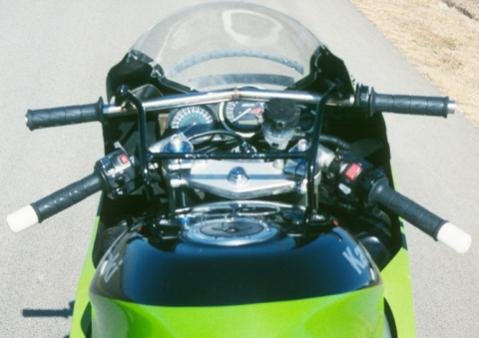rad
Retired from riding
Back to the training for a minute
No course, existing or soon to be here, is going to produce a student ready to be out in traffic. It really is just like learning any sport. Pick golf, you can learn the basics in a few hours, but you will suck at it when your training is complete, and you may suck at it for years and you may be the type of person that my suck at it for life! The difference between learning golf and learning to ride a motorcycle is that when you shank that drive on the golf course a Buick does not run over the top of you….Well, unless it’s the Buick Open
My point is, no matter how complete we make our instruction the ultimate responsibility will always fall on the novice rider to make proper decisions as it relates to their level of riding skill.
My take on the high fatality rate in this country, after having ridden for many decades and taught for one decade, it is not just a weakness in the instruction, even though that can be improved, the weakness is in the rider’s mentality. I think more in this country than any other comes a sense of entitlement and the simplistic notion that motorcycle riding, and driving cars in general, is like a big ride at Disneyland, just all fun and no real risk. Americans fail to process and understand that motor vehicles are the number one cause of accidental death in this country!
We are not a very bright lot!
If you want to improve motorcycle safety, start by producing better car drivers. Not just because they will keep us safer, rather, they are the future motorcycle riders.
No course, existing or soon to be here, is going to produce a student ready to be out in traffic. It really is just like learning any sport. Pick golf, you can learn the basics in a few hours, but you will suck at it when your training is complete, and you may suck at it for years and you may be the type of person that my suck at it for life! The difference between learning golf and learning to ride a motorcycle is that when you shank that drive on the golf course a Buick does not run over the top of you….Well, unless it’s the Buick Open
My point is, no matter how complete we make our instruction the ultimate responsibility will always fall on the novice rider to make proper decisions as it relates to their level of riding skill.
My take on the high fatality rate in this country, after having ridden for many decades and taught for one decade, it is not just a weakness in the instruction, even though that can be improved, the weakness is in the rider’s mentality. I think more in this country than any other comes a sense of entitlement and the simplistic notion that motorcycle riding, and driving cars in general, is like a big ride at Disneyland, just all fun and no real risk. Americans fail to process and understand that motor vehicles are the number one cause of accidental death in this country!
We are not a very bright lot!
If you want to improve motorcycle safety, start by producing better car drivers. Not just because they will keep us safer, rather, they are the future motorcycle riders.


 along w/ sundry other attributes... is also going.
along w/ sundry other attributes... is also going.